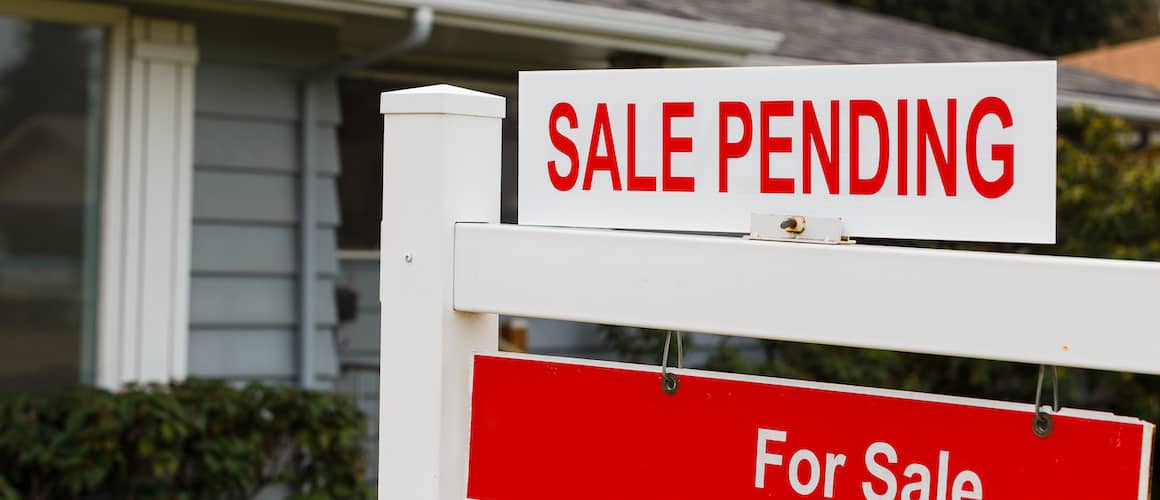The Federal Reserve And Its Impact On Mortgage Interest Rates

The Federal Reserve has many roles, one of which is to promote economic stability through monetary policy. Interest rates serve as a key lever the Federal Reserve uses to stabilize the economy. We examine the effect of the Federal Reserve on Mortgage Interest Rates.
What Does The Federal Reserve Do?
The Federal Reserve, sometimes called the Fed, is the central bank of the United States. As a key player in monetary policy, the Fed is heavily involved in how the economy functions. But its key roles include:
- Conducting monetary policy: A key goal of the Fed is to maintain price stability and create an environment conducive to as high a level of employment as possible.
- Promoting financial system stability: Officials seek to contain risk to the financial system and make sure things function smoothly.
- Checking on safety and long-term viability of individual financial institutions: It accomplishes this through a combination of monitoring and enforcement of regulations.
- Ensuring payment systems function smoothly: Services provided to banks as well as the U.S. government make certain that your money gets where you intend it to go.
- Working to facilitate consumer protection and community development: It supervises financial institutions on the consumer’s behalf, as well as works for community economic development.
All in all, the Fed is tasked with protecting the general stability of our financial system.
What’s Your Goal?
Home Purchase
Home Refinance
Tap Into Equity
How Do Federal Reserve Rates Impact Mortgage Interest Rates?
The Federal Reserve’s policies impact interest rates. While the Fed doesn’t directly set mortgage interest rates, it does set the federal funds rate, which influences interest rates across the board, including mortgage rates.
Federal Funds Rate Vs. Mortgage Rate
The Fed sets a target range for the federal funds rate, which is the rate at which federally insured banks borrow money from each other overnight to cover short-term funding operations. Technically, the rate is negotiated by the banks themselves in individual transactions. But on a practical level, the Fed’s target range affects everything from credit cards to mortgages.
The target for the federal funds rate is set by the Fed and generally has a big influence on a variety of consumer lending options. While there’s certainly an impact of the federal funds rate on mortgage rates, the impact is greater on credit cards – which turnover balances every month – than on longer-term funding like auto loans and home loans.
In general, mortgage rates tend to rise and fall with the federal funds rate. Although the exact impact on mortgage rates isn’t one-to-one, a rising federal funds rate often pushes mortgage interest rates higher.
The Fed can also influence mortgage rates by buying or selling bonds and mortgage-backed securities. In 2008 and again in 2020, the Federal Reserve stepped in to become the biggest buyer of most of the mortgage-backed securities issued in the U.S.
Because investors understood there was a willing buyer on the other end, the yield could be lower while still getting purchased. This had the effect of allowing mortgage rates to be lower. When the Fed is selling mortgage bonds, it often pushes mortgage rates up.
Ready To Become A Homeowner?
Get matched with a lender that can help you find the right mortgage.
How Does The Federal Reserve Affect Certain Mortgage Types?
While fixed-rate home loans are relatively common, there is a wide range of mortgage types available. Some mortgage types are more impacted by the Federal Reserve policies than others.
Typically, homeowners with a fixed-rate mortgage don’t have to worry about rates rising over time. But prospective buyers often feel the pinch of rising rates as they try to fit a mortgage payment into their budget.
On the other hand, homeowners with a variable interest rate attached to their home loan can feel the impact of rising rates on their wallets most directly. Below is a closer look at the impacts.
Home Equity Line Of Credit
A home equity line of credit (HELOC) usually comes with a variable-rate. In some cases, the variable-rate period comes after an initial fixed-rate period. Lenders usually tie the variable rate to the Secured Overnight Financing Rate (SOFR), which is often impacted by the federal funds rate.
As the federal funds rate rises, the variable rate attached to the HELOC balance grows. Unfortunately, this can push your monthly payments higher or make borrowing from the HELOC unaffordable.
Adjustable-Rate Mortgage
An adjustable-rate mortgage (ARM) is a type of mortgage that comes with a variable rate, usually after a period of a predetermined interest rate. As the federal funds rate rises, the interest rate attached to an ARM often rises during the adjustment periods.
Depending on the terms of your ARM, you might see your interest rate rise up to a set limit. With that, your monthly payment will also rise. It’s critical to leave some room in your budget for a larger mortgage payment if you opt for an ARM.
Take The First Step To Buying A Home
Find a lender that will work with your unique financial situation.
What To Know About The Federal Reserve Mortgage Rates As A Borrower
As a prospective homebuyer, it’s helpful to be aware of the interest rate environment. While the federal funds rate and mortgage rates aren’t directly connected, a rising federal funds rate usually signals higher mortgage rates.
In terms of getting a mortgage, higher rates make borrowing more expensive. Usually, this means you’ll have to spend more money on interest charges, which can cut into your home-buying budget. It’s a good idea to monitor rates as you navigate your home-buying journey to ensure that getting a mortgage remains affordable for you throughout the process.
What Is The Current Fed Mortgage Rate?
The Federal Reserve doesn’t set mortgage rates. Instead, it sets the target range for the federal funds rate, which has an indirect influence on all consumer interest rates, including those for mortgages.
As of March 2024, the Federal Reserve target range for the federal funds rate is 5.25% to 5.50%.
As of writing, mortgage rates are higher. But since mortgage rates change regularly, it’s a good idea to check out current mortgage rates. But keep in mind that these are average rates. The exact rate you qualify for will vary based on the changing market conditions and your unique financial situation.
The Bottom Line
The Federal Reserve has a major impact on consumer interest rates through the target range for the federal funds rate, which it increases or decreases to stabilize prices. Although this is a target range, in practice, lenders pretty much follow the Federal Reserve’s guidance. However, short-term lending like credit cards is more impacted than longer-term lending like mortgages.











